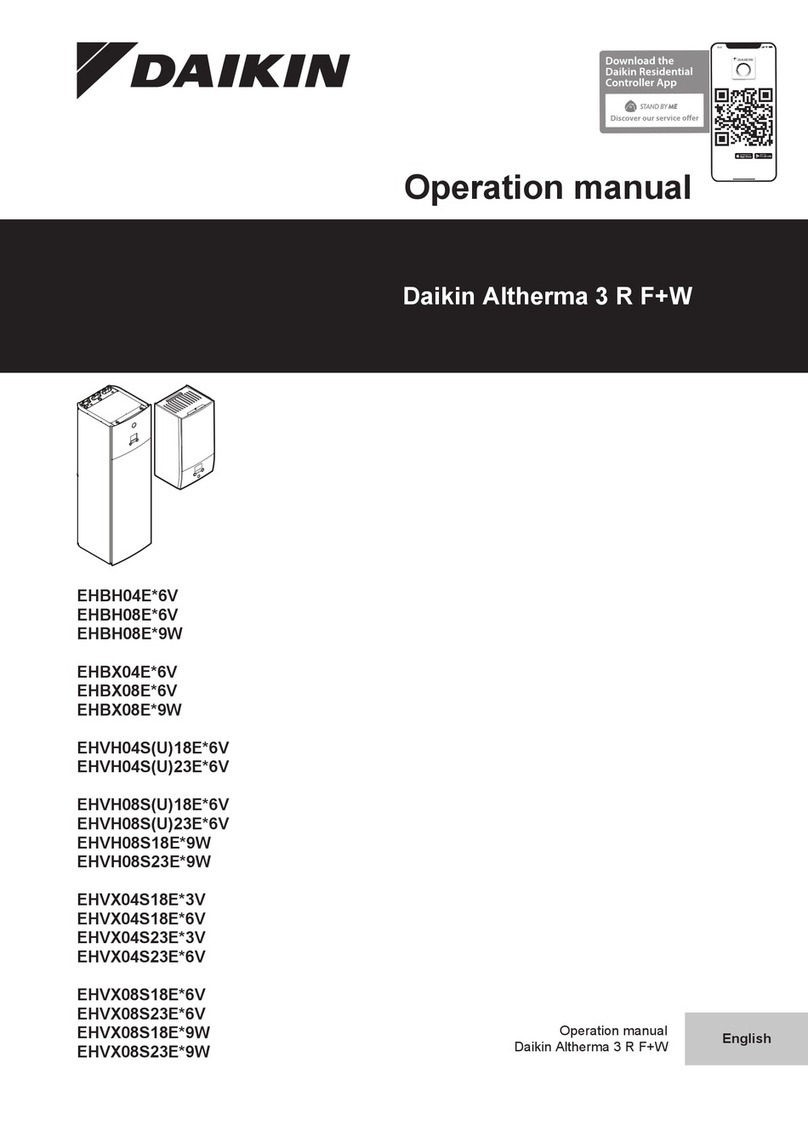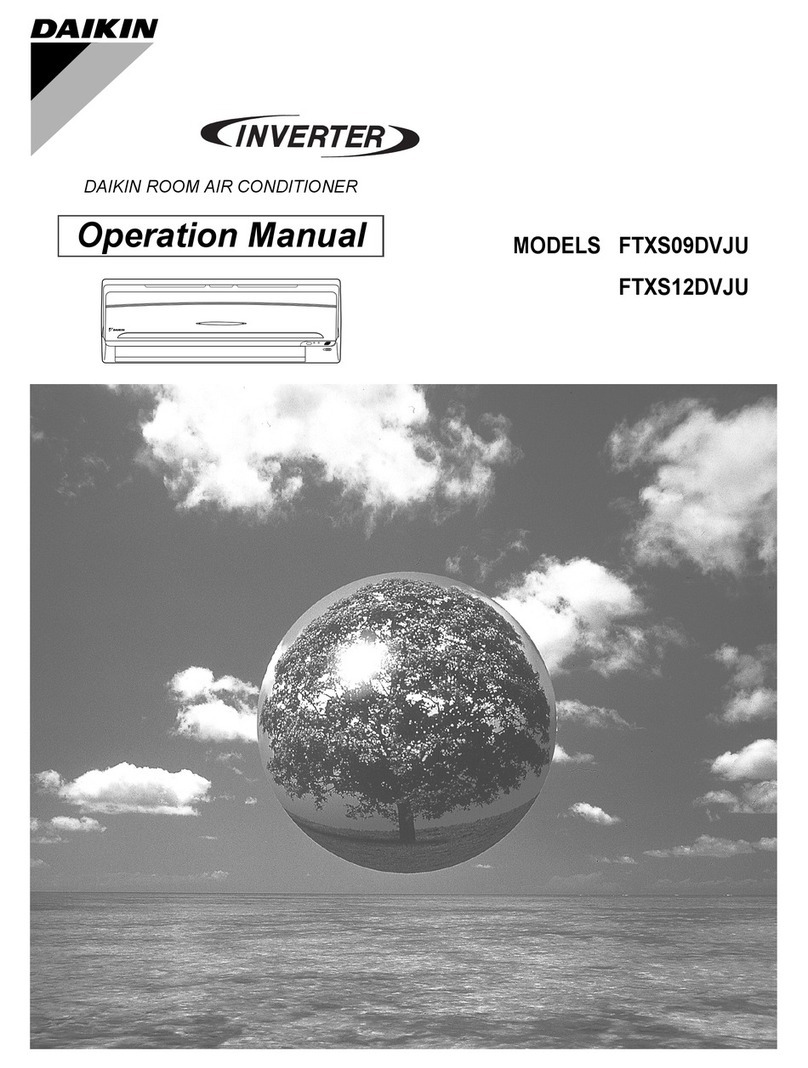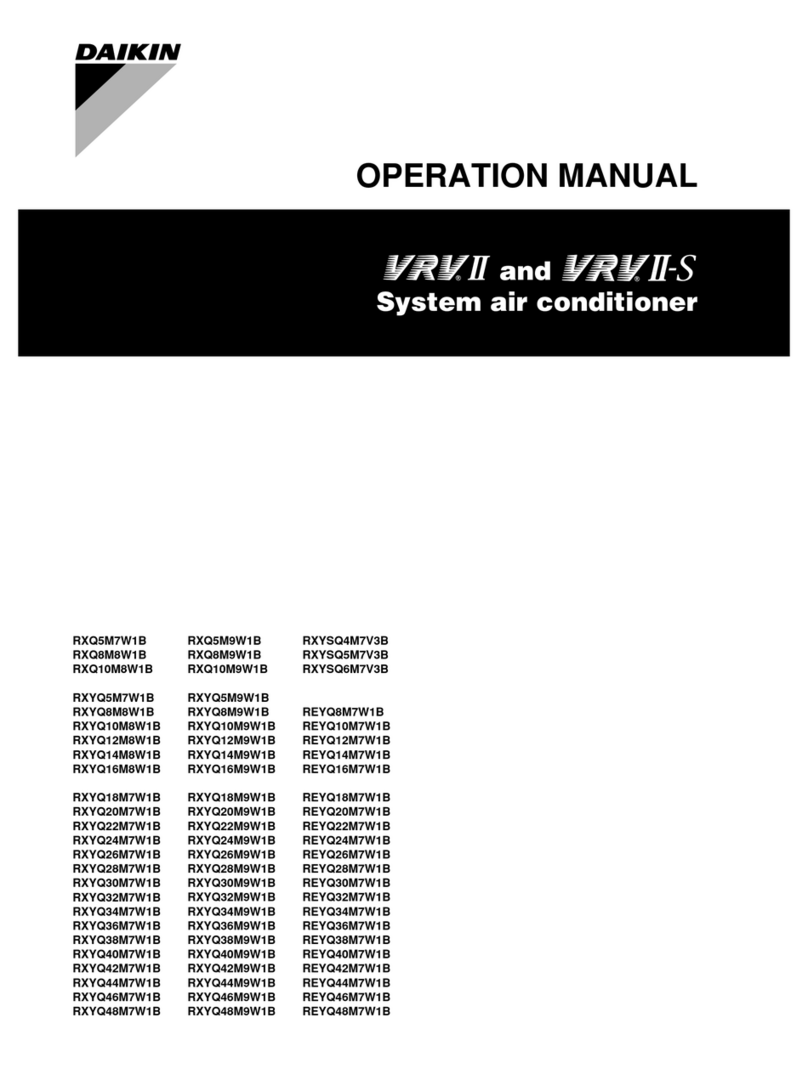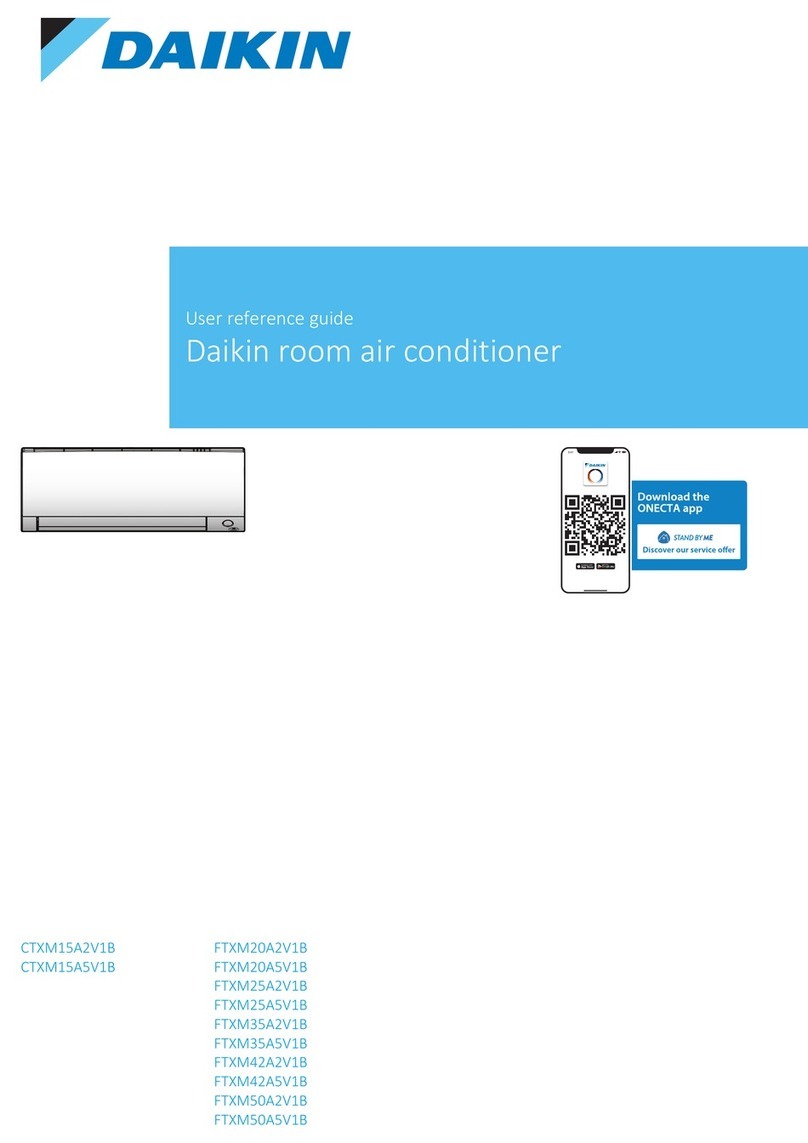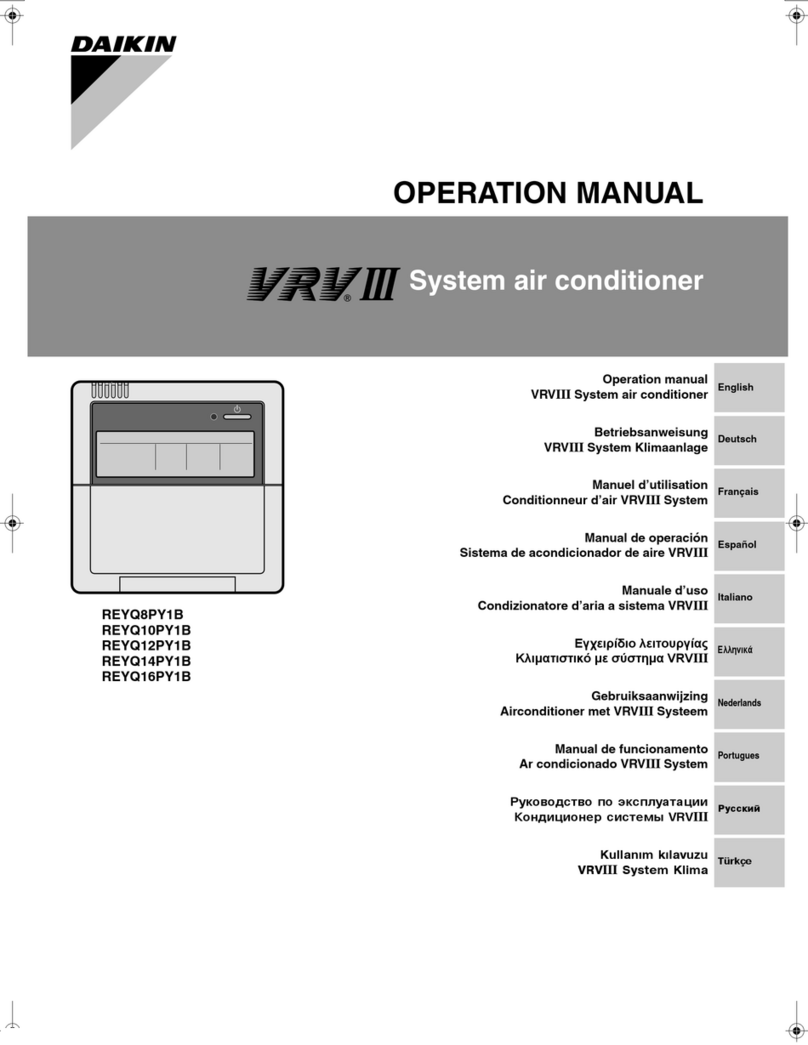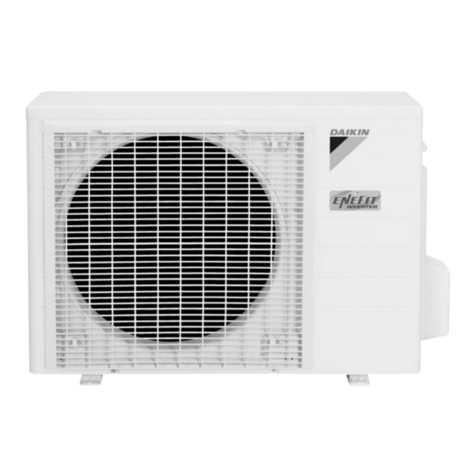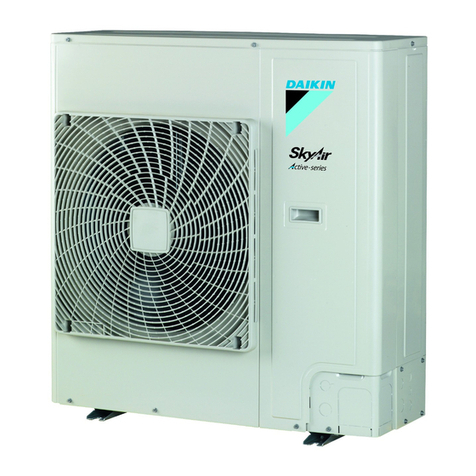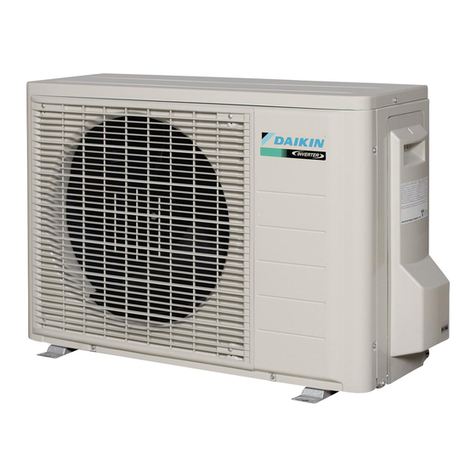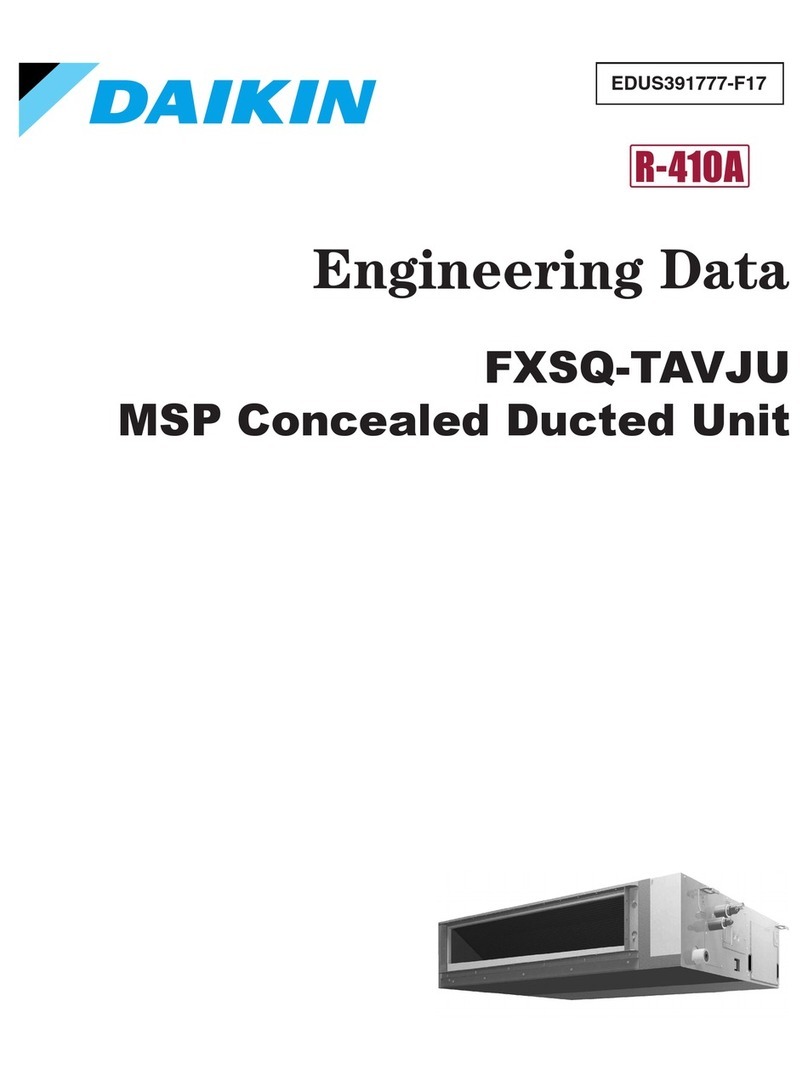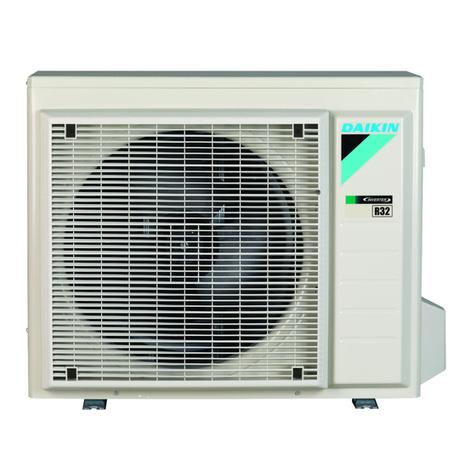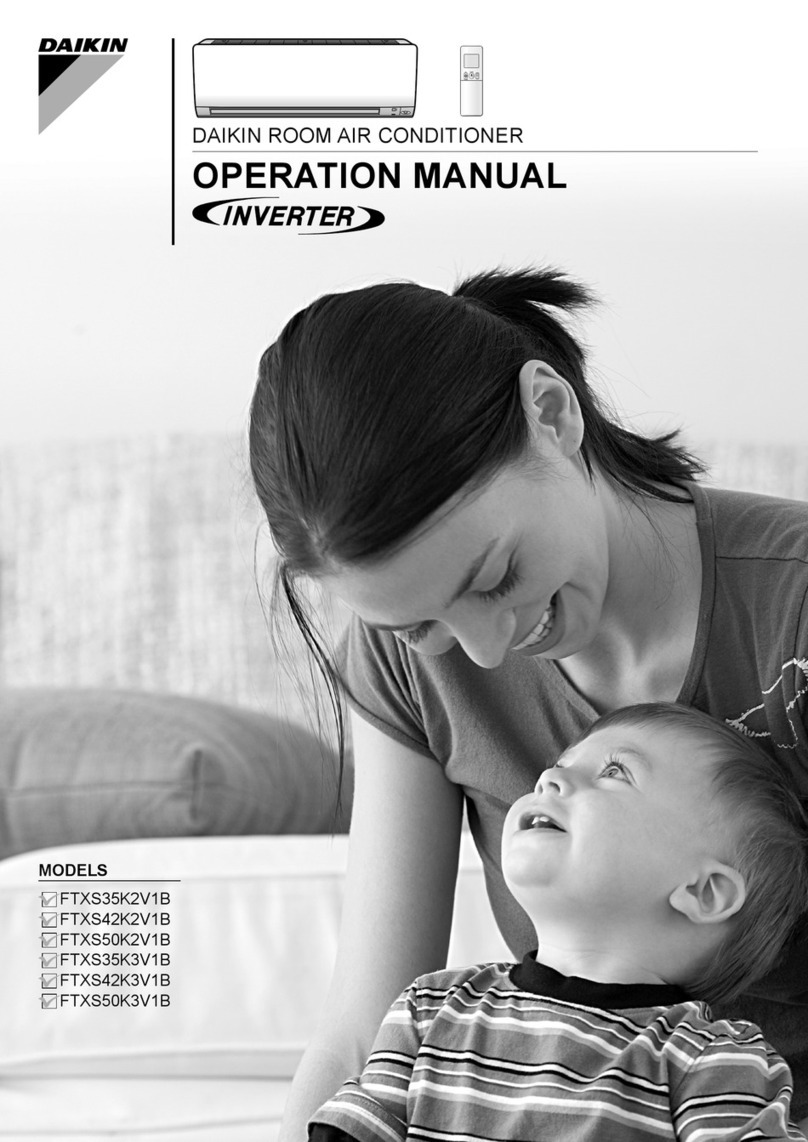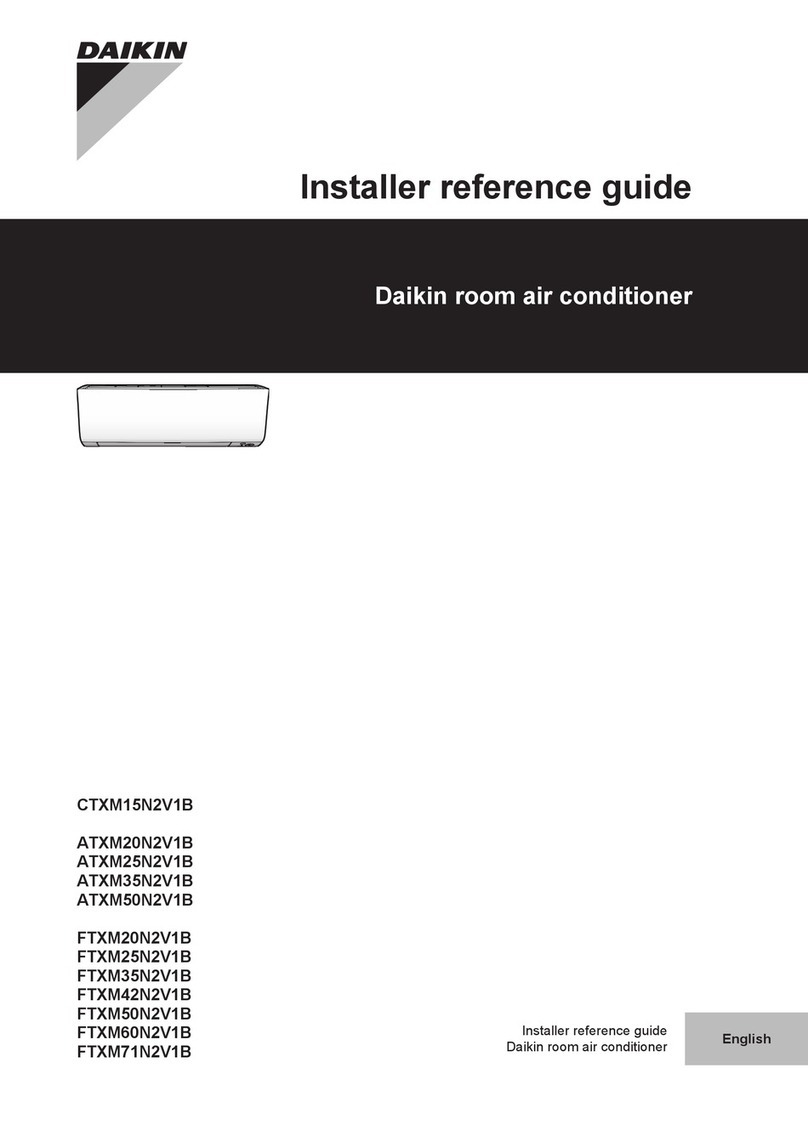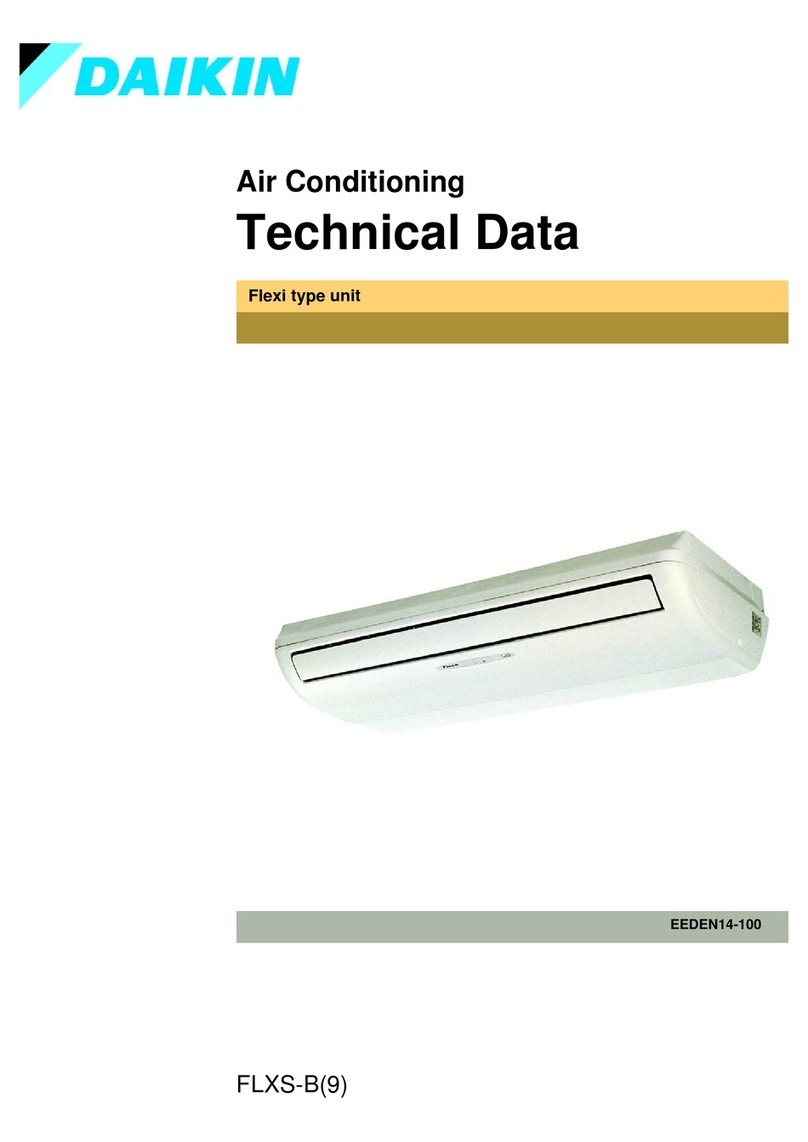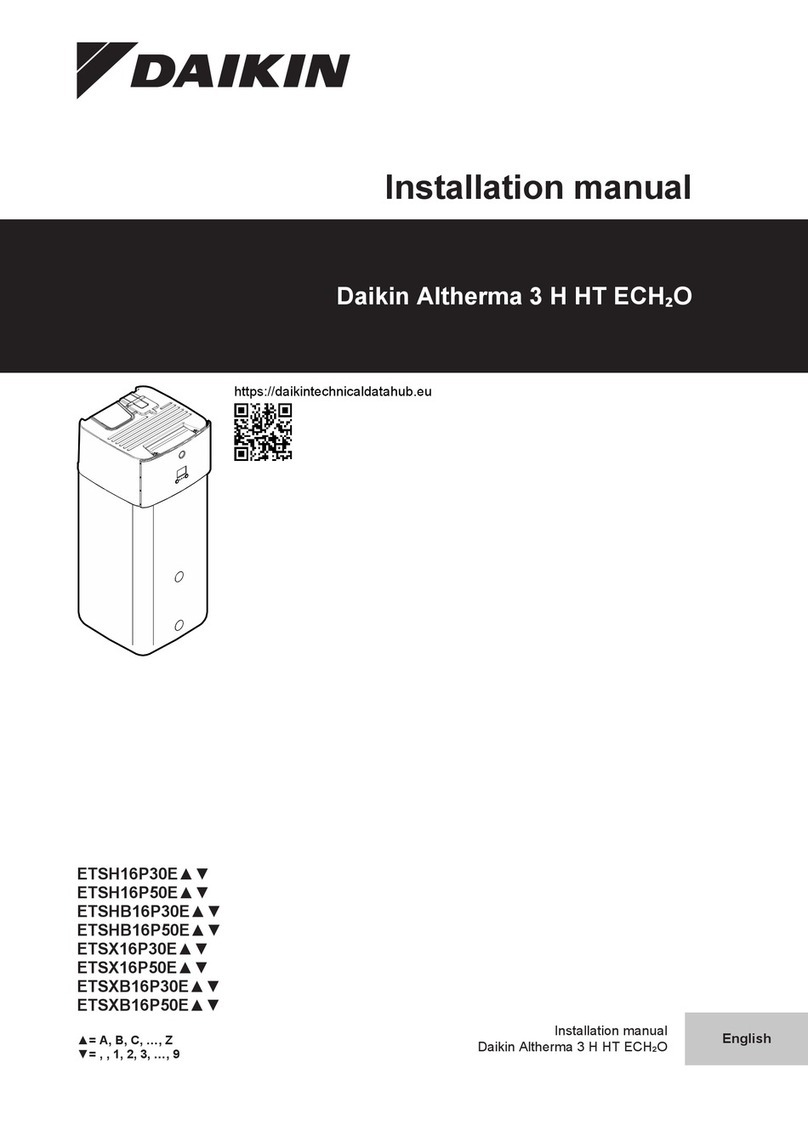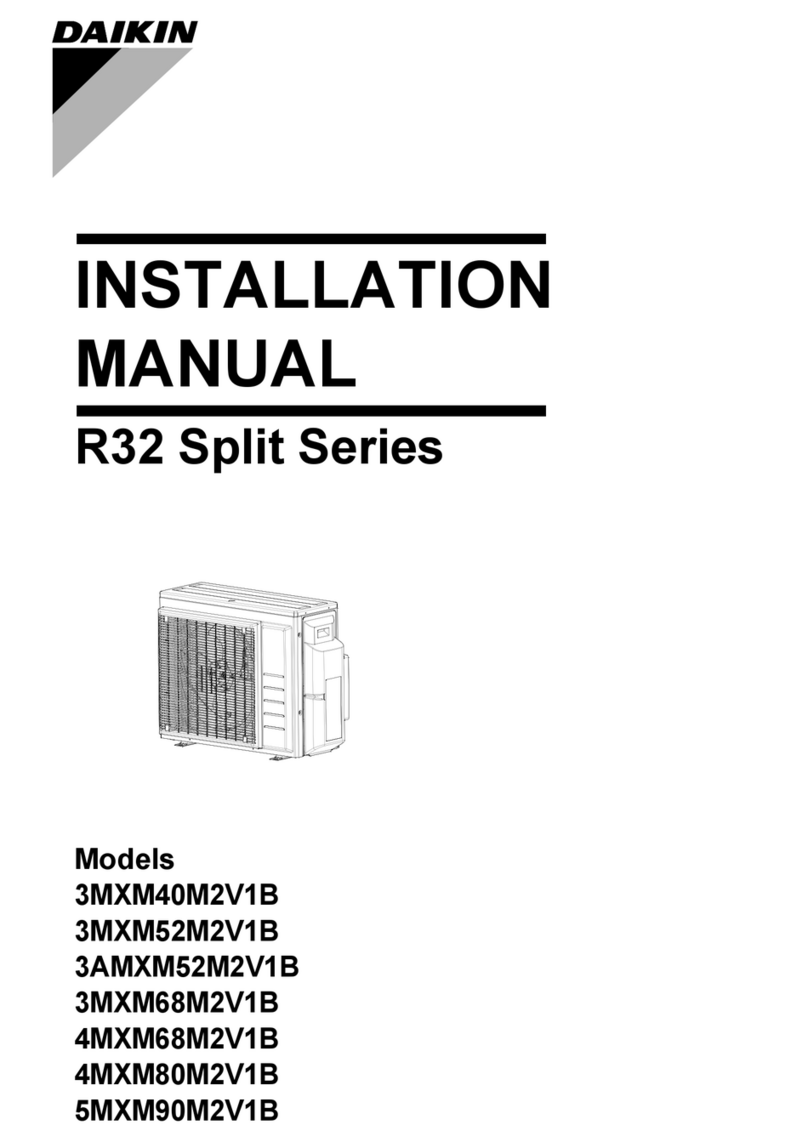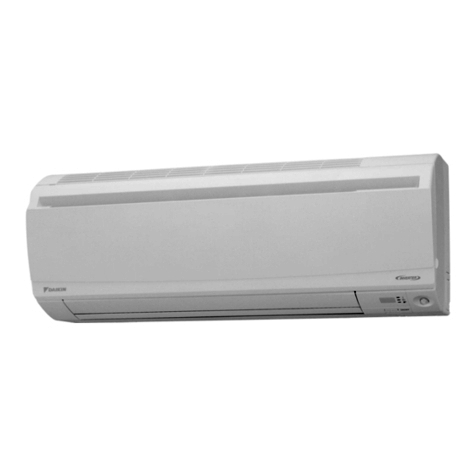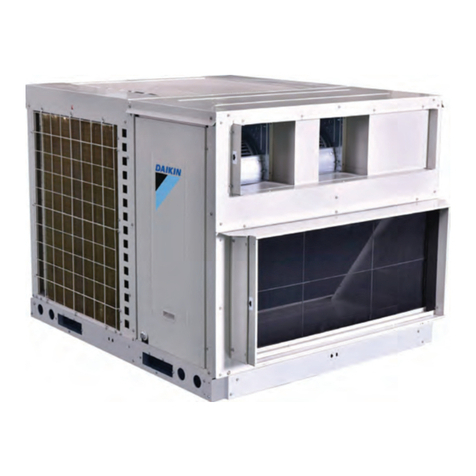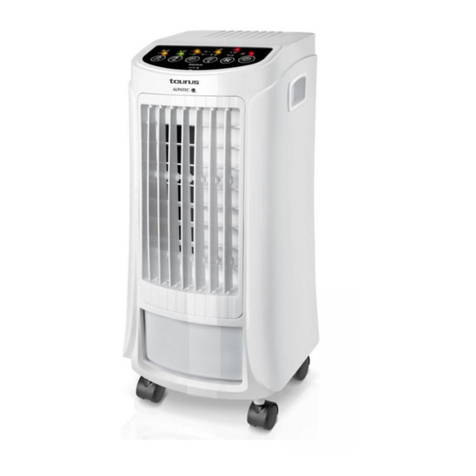
3
To avoid possible explosion:
Never apply flame or steam to a refrigerant cylinder. If you
must heat a cylinder for faster charging, partially immerse
it in warm water.
Never fill a cylinder morethan 80% fullof liquid refrigerant.
• Never add anything other than R-410A to an R-410A cylinder.
The service equipment used mustbe listed or certified for the
type of refrigerant used.
• Storecylinders in acool, dry place. Never use a cylinder
as a platform or a roller.
•
•
To avoid possible explosion, use only returnable (not disposable)
service cylinders when removing refrigerant from a system.
• Ensure the cylinder is free of damage which could lead to a
leak or explosion.
• Ensure the hydrostatic test date does not exceed 5 years.
• Ensure the pressure rating meets or exceeds 400 lbs.
When in doubt, do notuse cylinder.
Refrigerant Lines
NOTE:Forimprovedrefrigerantmanagement,equiptheevaporator
coil with a field-supplied thermal expansion valve (TXV) and the
liquid line with a field-supplied liquid line solenoid. Ensure the
solenoid is installed as close as possible to the evaporator coil to
prevent refrigeration migration in the compressor “OFF” cycle.
Useonlyrefrigerantgrade(dehydratedandsealed)coppertubing
toconnectthecondensingunit with the indoorevaporator. After
cutting the tubing, install plugs to keep refrigerant tubing clean
and dry prior to and during installation. Tubing should always be
cut square keeping ends round and free from burrs. Clean the
tubing to prevent contamination.
DoNOTletrefrigerantlinescomeindirectcontactwithplumbing,
ductwork, floor joists, wall studs, floors, and walls. When run-
ning refrigerant lines through a foundation or wall, openings
should allow for sound and vibration absorbing material to be
placed or installed between tubing and foundation. Any gap be-
tween foundation or wall and refrigerant lines should be filled
with a pliable silicon-based caulk, RTV or a vibration damping
material.Avoidsuspendingrefrigeranttubingfromjoistsandstuds
with rigid wire or straps that would come in contact with the
tubing. Use an insulated or suspension type hanger. Keep both
lines separate and always insulate the suction line.
Suct Liq Suct Liq Suct Liq
7 1/2 1 1/8 5/8 1 3/8 5/8 13/8 5/8
10 1 3/8 5/8 1 5/8 5/8 15/8 5/8
Cond Unit
(Tons)
REFRIGERANTLINELENGTH(ft)
0-24 25-49* 50-74**
Line Diameter (In. OD)
Fullratinglinesize
* Lines greaterthan 74 feet inlength orvertical elevation changes more
han 50 feet refertothe Remote Cooling Service Manual orcontact your
istributorforassistance.
Insulation is necessary to prevent condensation from forming
and dropping from the suction line. Armflex (or satisfactory
equivalent) with 3/8” min. wall thickness is recommended. In
severe conditions (hot, high humidity areas) 1/2” insulation may
be required. Insulation must be installed in a manner which
protects tubing from damage and contamination.
Where possible, drain as much residual compressor oil from ex-
isting systems, lines, and traps; pay close attention to low areas
whereoilmaycollect. NOTE:Ifchangingrefrigeranttypes,ensure
theindoorcoilandmeteringdeviceiscompatiblewiththetypeof
refrigerantbeingused;otherwise,theindoorcoilmustbereplaced.
To facilitate oil return to the compressor, a horizontal suction
line should be pitched (1/2” per 10’ toward the condensing unit.
FilterDrierandSightGlass
A liquid line filter drier is factory installed. Field-install the sup-
plied sight glass/moisture indicator on the liquid line as close as
practical to the service valve.
Burying Refrigerant Lines
If burying refrigerant lines can not be avoided, use the following
checklist.
1. Insulate liquid and suction lines separately.
2. Enclose all underground portions of the refrigerant lines in
waterproofmaterial(conduitorpipe)sealingtheendswhere
tubing enters/exits the enclosure.
3. If the lines must pass under or through a concrete slab,
ensure lines are adequately protected and sealed.
Refrigerant Line Connections
IMPORTANT:Toavoidoverheatingtheservicevalve,TXVvalve,
orfilterdrierwhile brazing, wrapthecomponent with awet
rag,or use athermalheat trapcompound asrecommended
by the compound manufacturer. Use a brazing alloy of 2%
minimum silver content. Do not use flux.



